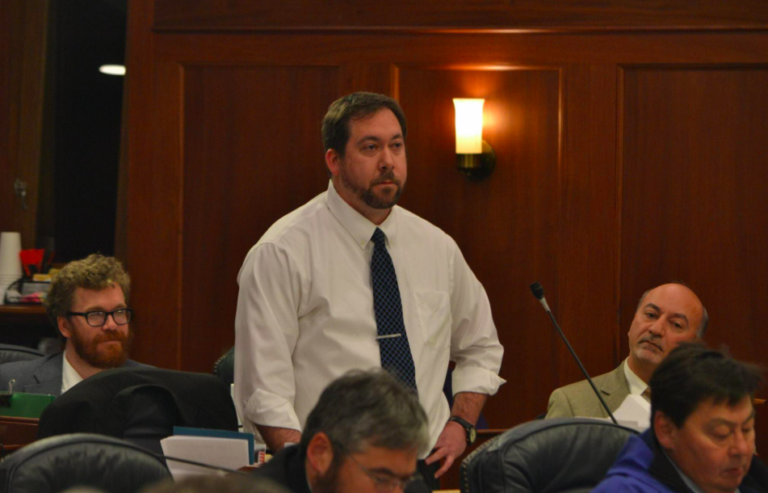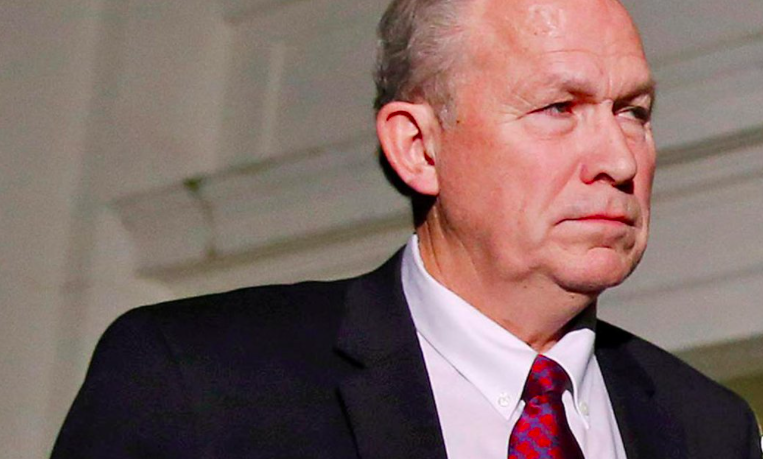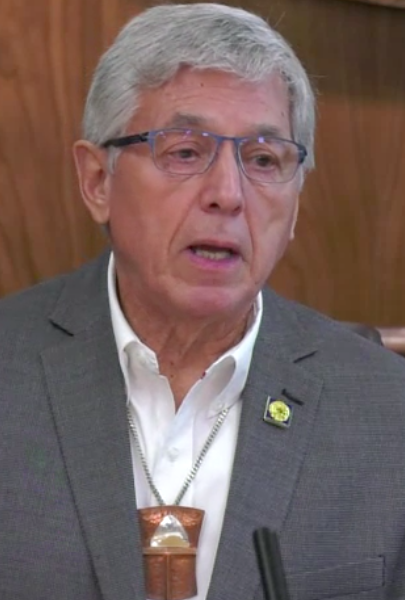Alice Rogoff gave a speech on Wednesday about the Arctic. She was at the University College of London, where no one was going to be rude enough to ask her about her newspaper bankruptcy.
Her ex-husband, now a most-eligible bachelor named David Rubenstein, was being interviewed in Davos, Switzerland, at a world conference attended by the “gold-collar” class — multiple steps up from mere “white collar”.
The topic of Rogoff’s talk was “The U.S. and its Emerging Arctic Interest.” She spoke in a room that holds up to 60 people. It was an exhaustive speech about energy, supply lines, shipping, Russian domination, and global warming. Also tourism, North Korea, and ice breakers. Standard Arctic stuff.
Rogoff brought an impressive slide deck and wore a fetching black wool jacket, as she does, with butterflies. She did not adopt the taupe school marm look she has been presenting in bankruptcy court in Anchorage.
Meanwhile, over at Davos, Rubenstein was being interviewed about “the next financial crisis” and how debt, geopolitics, unexpected world events and a widespread sense of general happiness were the things that worried him most as a private equity investor. He wore a pinstripe suit, as he does, and no wedding ring. He hasn’t worn one for years.
ALASKA ALICE’S FINANCIAL CARNAGE
Back in blue-collar Alaska, a quiet court settlement was being finalized with GCI, Rogoff’s former landlord. Rogoff had signed a confidential agreement just before she jetted off to London for her speaking engagement and the requisite black-tie dinners and receptions.
GCI, the company she once blamed for her bankruptcy, had accepted an offer from her, ending negotiations on at least one claim. A big one.
The “confession of judgment” was filed Wednesday in State Superior Court in Anchorage. The judgment pertains to the $1.5 million personal guarantee Rogoff made last year to GCI, a promise that she would remove printing presses and clean up the GCI building or pay GCI the amount she estimated the removal and mitigation would cost.
It appears from a copy of the judgment that Rogoff is paying something for GCI to do the work for her. But the terms are confidential and GCI would not comment for this story.
Rogoff, former owner of the now-defunct Alaska Dispatch News (now restored as the Anchorage Daily News and under new owners), has at least some cash to pay GCI; her divorce to David Rubenstein is in the rearview mirror. She has cash flow once again.
But although the press removal bill is now settled, she has not paid hefty amounts that many others say she owes them, most of whom are small Alaska businesses and individuals. Her former business partner, Tony Hopfinger, is waiting for his court date in March with Rogoff. Hopfinger sued Rogoff in 2015, saying she still owed him $900,000 after he sold her his portion of the Dispatch. She said she owes him nothing.
[Read: Rogoff response: I owe him nothing]
Another lawsuit, from Arctic Partners, is also pending. And so is another from GCI over unpaid back rent and electrical bills that Rogoff walked out on, totalling well over $1.3 million plus compensatory damages.
And then there’s the multiple creditors, including Northrim Bank, that were standing in line to be made whole after they allowed Rogoff to run up the bills when she purchased the Anchorage Daily News.
Some are owed only a few hundred dollars or a few thousand. But it’s a lot of money to them. And they won’t see much, if anything, if she has her way.
WHY ROGOFF OWED GCI MILLIONS
When Rogoff bought the Anchorage Daily News and renamed it the Alaska Dispatch News, the purchase included the building on Northway Drive. She bought the entire operation and property from the McClatchy Company and quickly sold the building to GCI to raise cash that would help her buy the newspaper.
She was going to look for a new location for the presses, but she was distracted by her flying adventures, her dinners with heads of state, hosting President Obama at her Campbell Lake home, and the many symposia about the Arctic. She just never got to it.
[Read: The summer of Alice Rogoff’s discontent]
She entered into an agreement with the communications company to vacate the premises by the fall of 2015, remove the printing presses and clean up the decades worth of spilled ink and solvents that were in the space occupied by the monster presses. She never got around to that either.
By February of 2017 she had stopped paying GCI rent and her sizable share of the electric bill for the building, which was running $40,000 a month.
In August of 2017, GCI filed a complaint in Superior Court to evict Alaska Dispatch News from the place that was once the heady headquarters of a growing newspaper, a newspaper that was now a shadow of its former self.
The eviction was not a surprise to Rogoff. Weeks earlier, she had been warned by GCI, which sent a letter to her on July 20, 2017, telling her that time was up and that the power would be cut off on Aug. 9.
[Read: Dispatch evicted]
GCI said she violated her lease by not paying it. Her response was to file for Chapter 11 bankruptcy immediately and ask Fairbanks businessman John Binkley to please re-engage in discussions with her to buy the paper. She had spurned his earlier offers.
Binkley immediately loaned the newspaper $1 million to keep going until they could carve out a deal.
Rogoff was indignant about GCI’s action.
She wrote in her paper, “It is extremely unfortunate that GCI has taken this legal action to evict us from our press facility. The events that led us to this point have been extremely complex. At no point has there been any bad faith on the part of the newspaper. Our goal has always been to keep Alaska’s largest newspaper alive and robust for the sake of our readers and the community. Our goal remains unchanged and we are in active discussions toward that end. Until the discussions are concluded, we are unable to provide any details. Please know that business disputes arise from many causes and are never one-sided. We hope that this matter will be resolved shortly to the benefit of all parties.”
But she was off soon for her annual summer in Nantucket and the usual sailing regatta adventures. She phoned it in from Nantucket when her first bankruptcy hearing took place on Aug. 24.
Meanwhile, Rogoff gave a personal guarantee to GCI to remove the presses and clean up the mess. And since her divorce decree was being worked on, the longer she could drag out her spiraling bankruptcy proceedings, the better.
This week’s settlement, which comes just weeks after her December divorce settlement with Rubenstein, will satisfy one in many disputes.
But there are so many others.
She owes Arctic Partners for rent and damages because she had signed a lease for a building on Arctic Blvd, but reneged on that one as well.
Rogoff also claims to be a creditor of her former company. She says she is owed $16.6 million from the defunct shell companies she owned and ran her newspaper operations with in a disorganized way that has even challenged the expertise of the bankruptcy trustee, who has been untangling the mess.
The difference between her as a creditor and the other creditors is evident in that, while they are trying to pierce the barricade between her business finances and her personal ones, she is fighting to keep her personal assets from becoming entangled in what is now a Chapter 7 liquidation bankruptcy.
With what fortune she now has from divorce settlement, Rogoff is perhaps, as with GCI, settling some of her debts — likely for substantially less than what she originally owed.
























